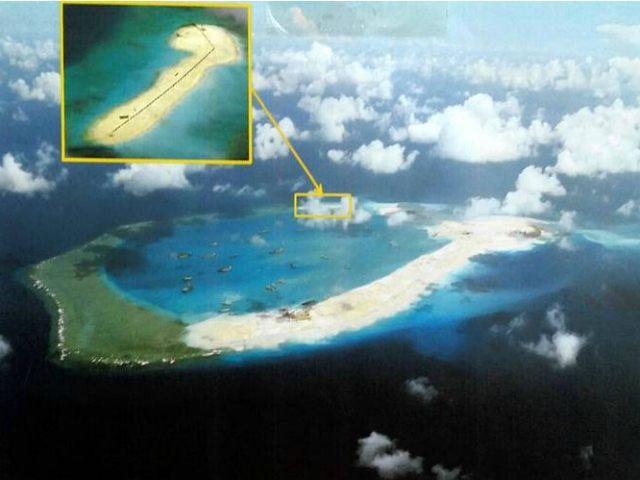Without mentioning any nations in particular, the Defense Minister of Taiwan, Kao Kuang-chi, told the nation’s legislature that he is concerned with the growing presence of military weapons and facilities in the South China Sea, where Taiwan makes multiple territorial claims.
The military presence of American, Japanese, and other regional powers has increased as the government of China has taken on extensive construction projects in disputed territory in the Spratly and Paracel Islands, which China unilaterally claims as its own.
“Neighboring countries have increased their military budgets and weapons procurement and are adjusting some of their military deployments and conducting joint drills at sea,” Kao Kuang-chi stated in his regular report to the legislature on potential international threats to Taiwan. He did not elaborate, though Reuters sees this as an indication of growing concern within the Taiwanese government that the waters of the South China Sea are growing crowded with warships. Reuters notes that “Taiwan’s claim to the South China Sea reflects that of mainland China, with both staking their territorial assertions on maps Chinese Nationalists drew up when they ruled the country before fleeing to Taiwan in 1949.”
Taiwan claims parts of the Spratly Islands and recently made a move to establish its claims publicly as outgoing President Ma Ying-jeou visited the largest island in the chain. As President Ma is a member of the China-friendly Kuomingtang party, the Chinese government used his visit as evidence that China controls all of the Spratly Islands, as Beijing does not acknowledge Taiwanese sovereignty. “Many of his policies don’t live up to the expectations of the Chinese mainland, but his unwavering stance on the South China Sea regardless of Washington’s pressurizing is worth praise,” the Chinese state-run Global Times newspaper said of the visit.
Taiwan’s president-elect, Tsai Ing-wen, is of the anti-China Democratic People’s Party (DPP), and while she has not made a public statement either supporting or opposing China’s claims in the region, her party has called for China to allow an international tribunal to settle the territorial claims. Tsai turned down an opportunity to visit the Spratly Islands with Ma, a move believed to have been an open rejection of Beijing’s claims to the region.
In anticipation of Tsai’s ascent to power, Chinese President Xi Jinping delivered a speech Sunday asserting that China would “resolutely contain Taiwan independence secessionist activities in any form” should the new government pursue them.
In addition to China and Taiwan, the Philippines and Vietnam both claims parts of the Spratly Islands. Malaysia and Brunei have also made claims to other parts of the South China Sea that China has claimed. The Philippines has brought its case to the Permanent Court of Arbitration at The Hague, where China has vowed to disregard any legal verdict handed down.
Most recently, Chinese Foreign Minister Wang Yi stated that the entire sea had belonged to China “since ancient times” in a joint press conference with Secretary of State John Kerry in Washington, a claim the United States, and the rest of the world, has soundly rejected.
China has built one completed aircraft landing strip in the Spratly Islands and is in the process of completing another three. In the Paracel Islands, China has stored a number of surface-to-air missiles and fighter jets, while denying it is “militarizing” the region.
Military activity in the region not conduction by China has been largely a reaction to the Chinese government’s developments there. The United States has conducted two “freedom of navigation” exercises, passing two warships through the South China Sea without incident and has begun talks with Australia to base long-range bombers near the disputed region. Japan has sent a submarine to the Philippines and signed an arms agreement with Manila to sell surveillance aircraft and other military equipment to the island nation.
“Japan is not a party directly concerned in the South China Sea dispute. We urge the Japanese side to mind its words and actions and refrain from undermining the peace and stability of the region,” Chinese Foreign Ministry spokesman Hong Lei said of Japan’s new presence in the region. While Japan does not make any claims in the South China Sea, China has attempted to use military coercion to establish sovereignty over the Japanese Senkaku Islands in the East China Sea.

COMMENTS
Please let us know if you're having issues with commenting.